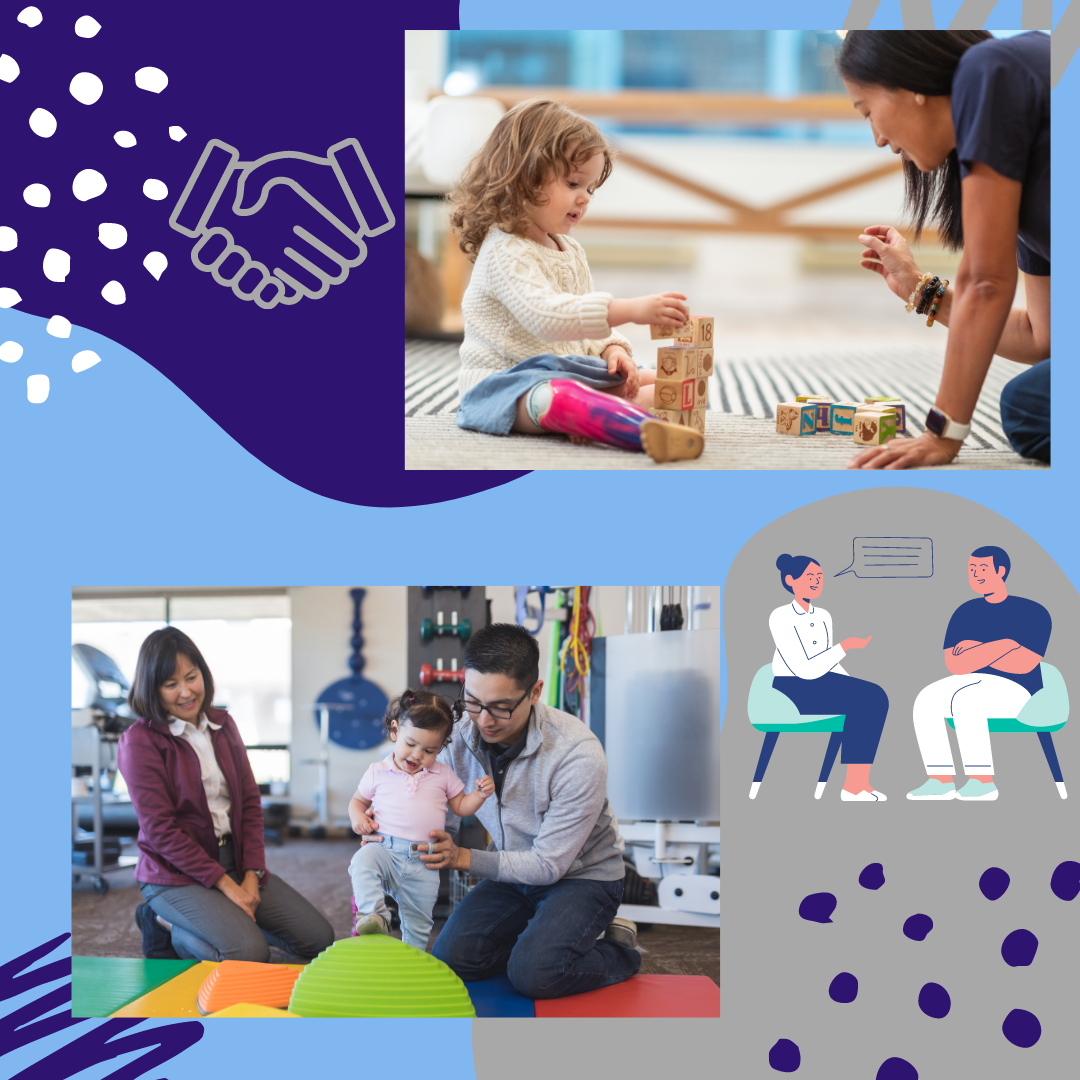
Rapport is a close and harmonious relationship in which people understand each other’s feelings or ideas that make communication possible. My caseload has grown in the past year with a lot of new families starting virtually and in person. I have learned to go into each session or interaction with the intention of building a relationship with the caregivers, other health professionals, and the child. Rapport connects me to my families and improves participation in the therapy process.
The initial phone call:
A great way to start off the rapport building is by having a dialogue with the caregiver about their concerns. I take the time to give my elevator pitch about what is pediatric occupational therapy. (See prior blog post). I want to be clear on how I can best support a family and a child. I ask about a family’s experience in the past with therapy and get an occupational profile of what their schedule looks like on a day-to-day basis. Most importantly, I like to find out the child’s interests to learn how to motivate the child to participate in future sessions.
First Session:
I check in with myself about how I am feeling. I sometimes get nervous about the start of therapy especially with walking into a new family’s house and in telehealth. My main goal in the first session is to have good joint interaction with the family and with the child.
Reading the Room:
I gather a lot of information from the greeting. I make clinical observations about the child’s visual attention and level of arousal. I proceed differently based on how the family interacts. For example, I will usually go sit on the floor on the other side of the room when a child is hiding behind a caregiver. The child is telling me they are not open to the interaction. I find being on the floor is great to be at their level. I wait for the child to want to engage with me. I talk with the parent and look around the environment to either start playing with toys nearby or I may bring out a novel toy. I am very cognizant of the activities I engage with because I want to engage the child in repetitive play. I model play that is at a low level to get the most back-and-forth interactions.
Zoom:
Telehealth is a new modality for a lot of pediatric occupational therapist during the pandemic. There has been a big learning curve since I cannot use modeling with the child to demonstrate my therapy strategies. I do not expect the child to engage with me on the screen the way that I can in person. I ask the family to have preferred toys nearby for the session. I talk to the family about how the session involves a coaching model. I observe and ask so many questions throughout the session while parent plays with the child.
Listen Before You Speak:
I usually will ask what stood out for you in the therapy session today? I make the home program based on the answer. I find a caregiver is most likely to do carryover when it was from an activity they identified. With each therapy strategy talked about I ask for the family to problem solve when they think they can incorporate it into their daily routines.
Connections are not Immediate:
Building the relationship with clients, family, and their therapy takes time. I show up to each session with an intention to connect. I reflect after each session and meet the family/ child’s personalized needs.
“I’ve learned that people will forget what you said, people will forget what you did, but people will never forget how you made them feel.”- Maya Angelou
